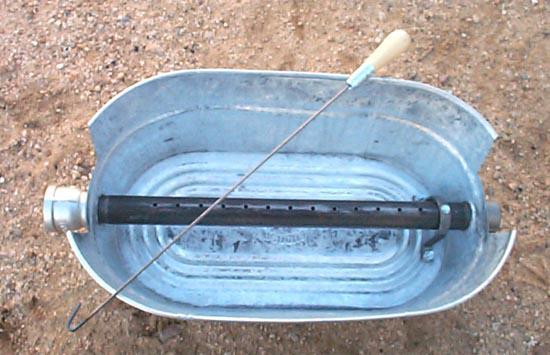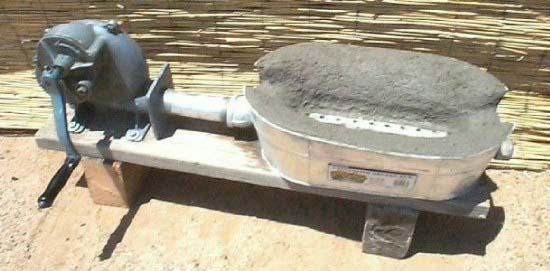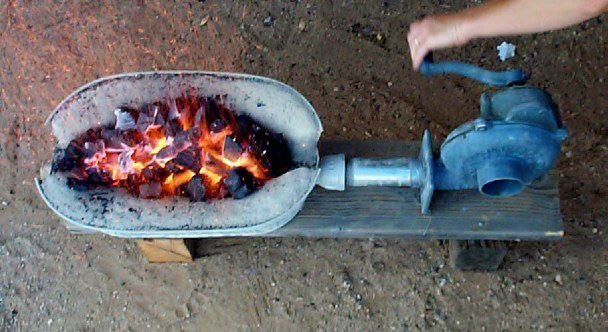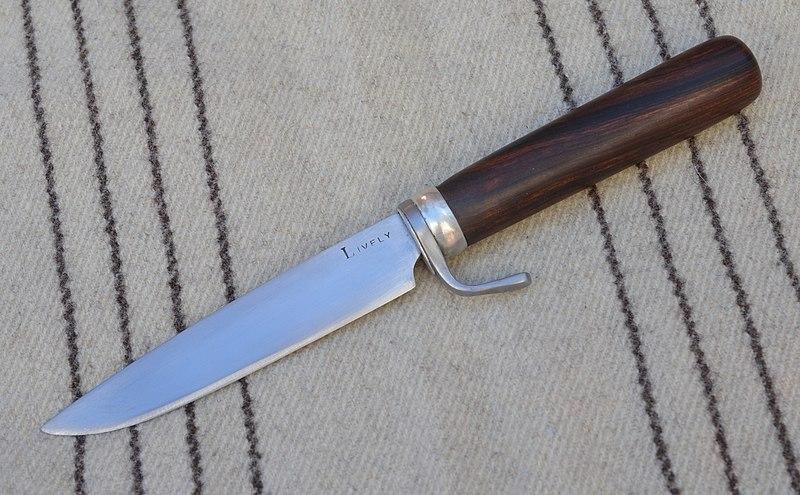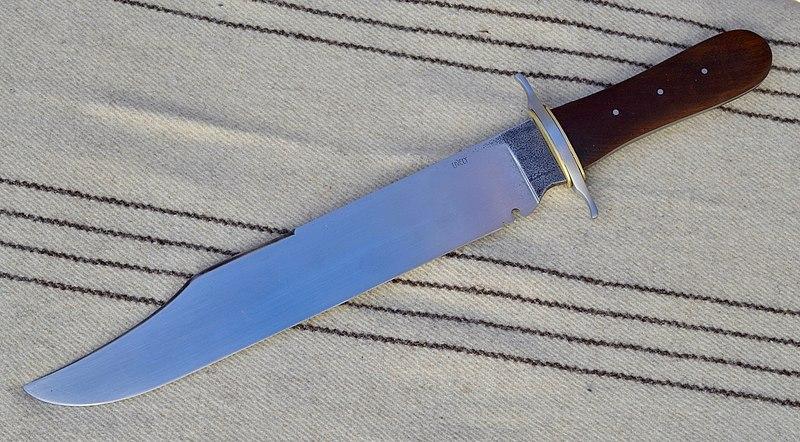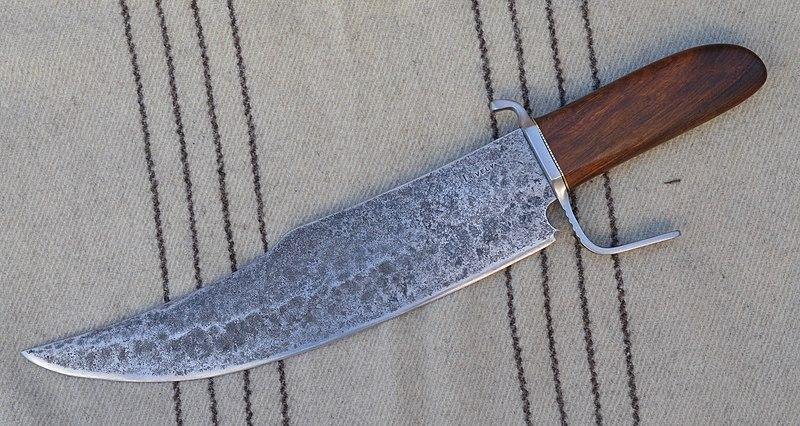
Tim Lively
Members-
Posts
14 -
Joined
-
Last visited
Content Type
Profiles
Forums
Articles
Gallery
Downloads
Events
Everything posted by Tim Lively
-
Elemental Metal Creations - For the tuyere I used 1 inch diameter black pipe and drill 1/4 inch holes spaced 1 inch on centers. This seems to give plenty of air flow without letting much ash in. I seldom have to clean the tuyere during forging but normally clean it before I light a new fire. Tell your wife thanks for buying you my video. It helps put food on the table!
-
Ohio, I looked at a lot of smiths around the third world populations for inspiration and noticed that most sit while forging. The Japanese usually work on their knees. I can't do that. I kills my back and my knees. The Himalayan smiths sat and one of their hammering techniques was a style that looked a little out of control. Almost like they were throwing the hammer loosely but had good control on impact. Another technique that seemed to help me was using a small faced anvil. It forces you to hammer in one spot and move the steel around instead of moving the hammer around. Sort of like a carpenter hits a nail. Your arm isn't relocating constantly and lets you relax more and give you more stamina. With practice you can almost close your eyes and hit the same spot. Almost.
-
The charcoal retorts are great. Especially if you can water down the charcoal while it's still hot. Otherwise it comes out baked like the Mexican lump. The baked variety of charcoal seems to spark more but maybe the wood species has something to do with that also. We always used Mesquite just because it's widely available here in the Southwest. Around Tucson we had El Diablo brand and we jokingly said it got it's name because it threw sparks like the devil. All the info I found on traditional Japanese box forges used pine for charcoal..
-
The horizontal tuyere doesn't need a waste gate in the traditional sense. The plug on the end of the horizontal tuyere is only needed to clear ashes at the beginning of a new day of forging. I've been able to get steel hot very quickly with only an inch of fuel under the blade. Slow and steady is the key to charcoal. For some reason it's not intuitive. I used charcoal for years before I made videos and other smiths didn't believe charcoal could get hot quickly but my video shows in actual time that it is very possible. The horizontal tuyere is what works. It is designed specifically for bladesmithing because a blade lays flat and long within the ravine of the forge. There are no "clinkers" so a waste gate isn't necessary. Commercial charcoal isn't very pure. It often times has coal and other impurities in it. Lump charcoal made in Mexico is horrible too. It sparks like crazy and makes it difficult to work with. It is made in Mexico by digging huge holes and mounding wood to the top of the hole and they get it burning really hot and push a layer of dirt over the mound. Essentially cooking the wood into charcoal lump like an over. The best charcoal is homemade. Simply create a campfire and when the the it's fully burning douse the fire with water. Let the charcoal dry completely and you have perfect charcoal for the forge. The dousing of water fills cavities in the lump and it practically eliminates sparks when using it in the forge. By looking at what traditional Japanese Smiths did is what led me to "discover" what to do myself. When we first started using charcoal in the early 1990s very few American Smiths were using it as a fuel and we had to learn from scratch.
-
My mistake. Must of been another crazy goat lady from Texas. lol just kidding with you. I'm a native Texan myself. Born in Abilene.
-
It's very common to use too much air while using charcoal as fuel. That's why I prefer the hand crank blower but you might be able to put a rheostat on a hair blower with good results. When you use too powerful of an air supply, the heat actually gets blown past the steel and wastes fuel. I saw this on the TV show, Forged in Fire. None of the contestants seemed to understand this and therefore couldn't figure out how to get the steel hot. They blamed it on the charcoal but in fact it was their own ignorance about how to use the fuel correctly. This is not a naive question at all. It is a very common problem with smiths using charcoal for the first time.
-
Here's a few photos of my old forge design. If there are any questions about it, I would be happy to try and answer them.
-
I think I remember seeing your posts years ago on Ron and Karen Hood's forum CrazyGoatLady, right? Did we meet at the Hoodlum Gathering at Pedernales Falls State Park in Texas? I did a video for Ron and Karen Hood before my own DVD came out. Back then they were both on VHS. The Hoods Woods video was titled "Primitive Knife Making" and was Number 9 of their Woodsmaster Series. I made my own a couple years after that titled "Knifemaking Unplugged". Thanks for watching yall! The Knifemaking Unplugged DVD is still available on Amazon.
-
This knife was hand forged using 1095 high carbon steel. The overall length is 9 inches. The ferrule and seppa are coin silver. The handle is Sonoran Desert Ironwood.
-
I made this Bowie for a friend that was in our video, Knifemaking Unplugged. William Hell out of Misery aka Bill Cooper. This Bowie is 18 inches overall and forged from 1095 high carbon steel with a 1018 mild steel guard. Brass spacers, steel pins and a walnut handle.
-
Thanks Y'all, I appreciate the welcome!
-
There is a lot of modern variations to my Charcoal Burning Washtub Forge design and it's all good. I'm very happy to have been able to contribute to the community. Now I'm just an old xxxx that few remember lol. I'm still hammering though. I live in a 16ft travel trailer and follow the seasons but I have my portable shop that goes everywhere with us. Knives are a great item to barter with on the road.
-
Thanks for the welcome! Yes, of course I remember you Bogiron. The days of the Neo Tribal Metalsmiths were a blast. We were the Outlaws of Knifemaking and ruffled a lot of old feathers back then. Now it's a just shadow of what it could of been. Good to see you're still hammerin! Forge On!
-
This Bowie knife was hand forged using 1095 high carbon steel. The guard is 1018 mild steel and the handle is Sonoran Desert Ironwood. The overall length is 15-1/4 inches.
